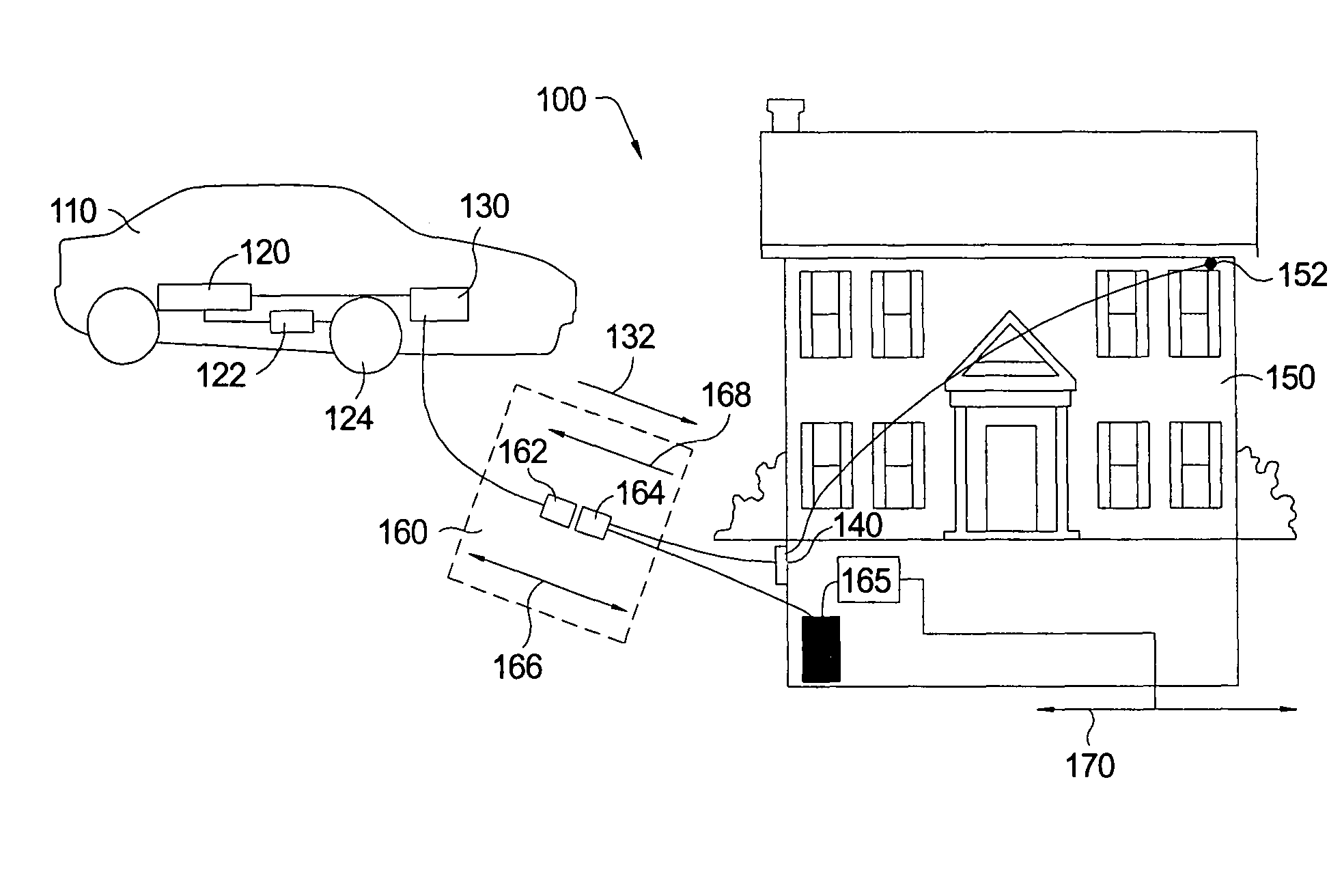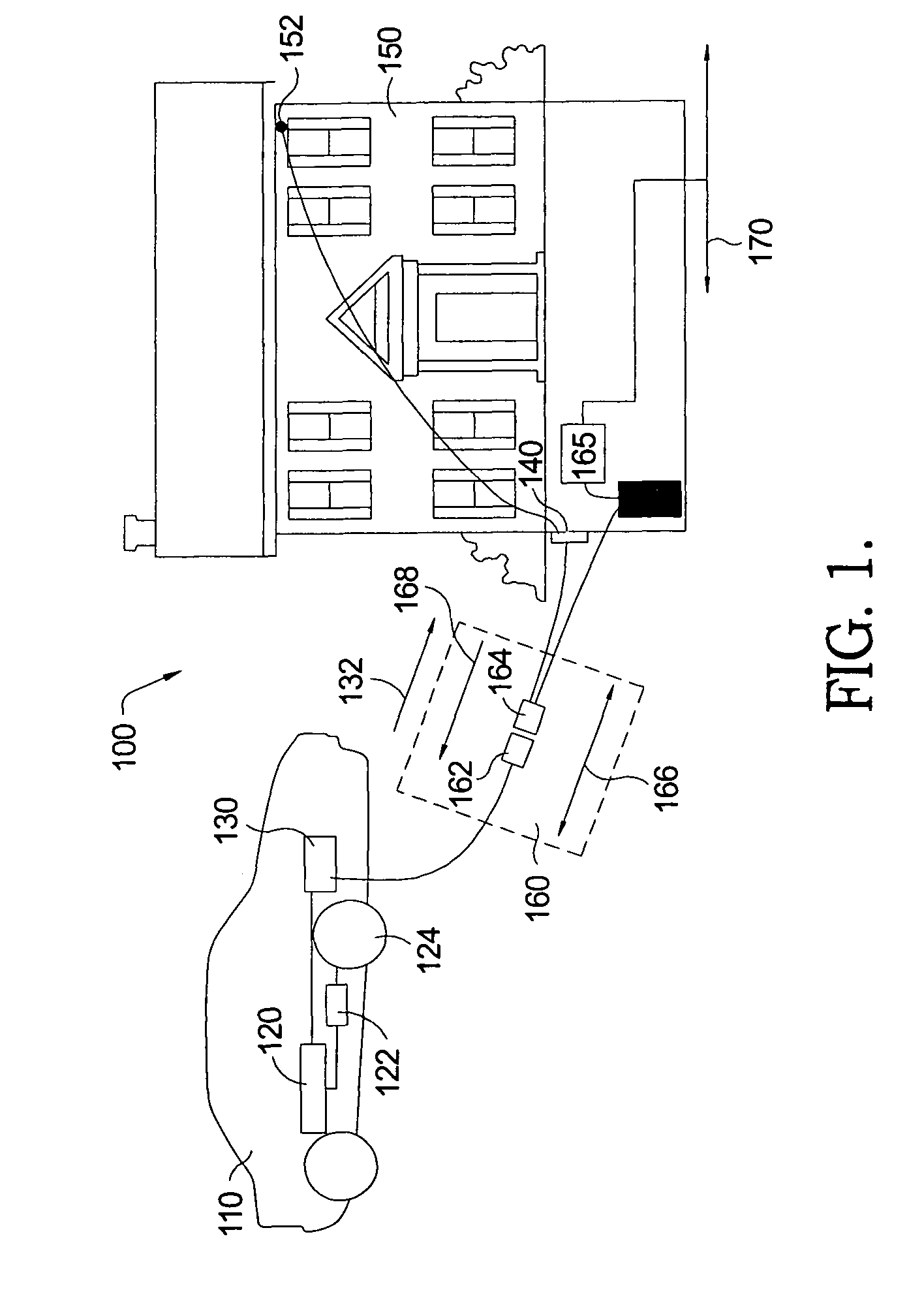Electric vehicle having multiple-use APU system
a technology of electric vehicles and auxiliary power units, which is applied in the direction of propulsion parts, gas pressure propulsion mounting, machines/engines, etc., can solve the problems of high cost, high speed, and long trip patterns of driving, and the battery technology is the limiting factor in terms of cost, functionality (range), and durability of ev systems. , to achieve the effect of reducing the net metered electricity, high power and low impedan
- Summary
- Abstract
- Description
- Claims
- Application Information
AI Technical Summary
Benefits of technology
Problems solved by technology
Method used
Image
Examples
Embodiment Construction
[0025]The invention covers strategies for non-vehicular uses of a plugged-in hybrid vehicle having an onboard rechargeable electrical energy source, such as a battery, and an onboard APU, preferably an SOFC system.
[0026]Referring to FIG. 1, a first embodiment 100, includes a hybrid electric vehicle 110 and stationary structure 150, for example, a residence, office, shopping center, truck stop, parking lot docking station, or other structure, electrically connected to a regional grid 152. Vehicle 110 includes one or more batteries 120, preferably low-impedance batteries such as nickel metal hydride or lithium ion batteries, as its primary source of energy for powering an electric motor 122 connected to wheel 124 for vehicle propulsion. Batteries 120 may be recharged by being plugged into an outlet 140 of structure 150 connected to regional grid 152 when the vehicle is stationary or by APU 130 (preferably an SOFC or optionally by an onboard ICE / generator or PEM) for recharging the bat...
PUM
 Login to View More
Login to View More Abstract
Description
Claims
Application Information
 Login to View More
Login to View More - R&D
- Intellectual Property
- Life Sciences
- Materials
- Tech Scout
- Unparalleled Data Quality
- Higher Quality Content
- 60% Fewer Hallucinations
Browse by: Latest US Patents, China's latest patents, Technical Efficacy Thesaurus, Application Domain, Technology Topic, Popular Technical Reports.
© 2025 PatSnap. All rights reserved.Legal|Privacy policy|Modern Slavery Act Transparency Statement|Sitemap|About US| Contact US: help@patsnap.com


